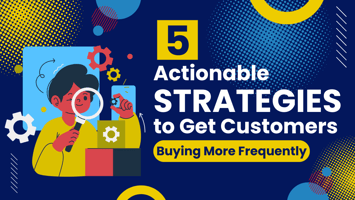Increasing sales doesn’t always mean going out to find brand new customers. In fact, one of the...
How to Train AI as Your Junior Team Member: Unlocking the Ownership Advantage
The AI boom isn’t just for tech giants. On a recent episode of The Ownership Advantage, hosts Tanner and Kay dove deep into how entrepreneurs and small business owners can harness the power of AI—not just as a fun tool, but as a tireless junior team member. Whether you’re new to ChatGPT, dabbling with Gemini or Adobe Firefly, or just plain overwhelmed by endless admin, this guide recaps their best ideas to start turning AI into your most productive hire yet.
The New Era: AI as a Team Member, Not Just a Gadget
AI isn’t going away—it’s already reshaping daily work for business owners, and those who embrace it early will thrive. But as Tanner pointed out, success starts with a shift in mindset. “Treat it almost as if it’s a junior team member,” he explains, “which means we go through the same process as hiring a person: define the work, train for the systems, and clarify the desired outcomes.”
Kay echoes this approach, using AI as a “receptionist” for her creative business—helping draft documents, organize emails, and even sparking new ideas for social media. Just like onboarding a real person, getting the most from AI is about clear communication, continuous feedback, and delegation.
Step 1: Identify and Bucket the Right Tasks
Before letting AI loose, it’s crucial to identify the tasks most suitable for delegation. As Tanner outlined, “Start with a full, honest self-assessment. What’s on your plate that you’re willing to hand off?”
Focus first on time-consuming, repeatable, or lower-skill tasks—think calendar management, inbox triage, social media scheduling, or initial drafts of client proposals. Kay highlighted using AI to unblock creative roadblocks: “Sometimes I just don’t know what to post on social media… it helps me cut down the thinking time.” AI’s greatest strength is in reliably handling these chores, giving you time back for high-level strategy and creativity.
Step 2: Specialize Your AI—Don’t Go General
As both speakers discovered, AI works best when it’s treated as a specialist, not a generalist. Tanner recommends setting up “projects” or dedicated chat threads for each function: “A Facebook specialist folder, a podcast specialist, a productivity specialist.” You can scope each with its own context, best practices, examples, and templates, enabling the AI to become an expert in exactly what you need.
Kay’s DIY version? Creating detailed prompts and questions even on the free ChatGPT plan, then bundling them together as needed. This specialization brings more relevant, authentic results and helps keep your workflow organized.
Step 3: Master Clear Prompting (and Get Specific!)
Here’s the golden rule: vague prompts equal vague results. Both guests stressed the value of specificity when working with AI. Instead of “Write a business post for me,” Tanner suggests this upgrade:
“Write a three-paragraph LinkedIn post in my voice. It should be about overcoming fear in entrepreneurship, include a personal story, an insight, and a call-to-action.”
Kay took this even further in her artist bio workshops. By prepping detailed, targeted questions and prompts, her clients could feed the AI personalized information—resulting in bios that were both authentic and professional. The lesson? The more detail, guidance, and intent you give, the stronger your results will be.
Step 4: Use the Five-Step Delegation Framework
Treating AI like a real team member unlocks its full potential. Tanner’s five-step formula is a great checklist:
- Define what needs to be done – Lay out clear tasks and outcomes.
- Confirm understanding – Ask AI to restate instructions, ensuring clarity.
- Explain the “why” – Add context about the purpose or audience.
- Provide the “how” – Share templates, examples, or formatting rules.
- Set clear completion standards – Spell out what a finished product looks like.
Rinse and repeat this process, tweaking and improving your prompts and virtual “training” with each new task.
Final Thoughts: Start Small, Grow Fast
Don’t wait for perfect conditions or feel pressured to automate everything at once. Kay and Tanner agree: start with a few time-draining admin tasks or use cases, specialize your instructions, and keep refining your communication. Investing as little as $20/month in a paid AI tool—even before hiring a real assistant—can boost productivity and free up energy for what truly matters in your business.
AI won’t replace human leadership or creativity, but as a junior team member, it will help you achieve more, faster, and with a whole lot less stress.
What AI tools are you experimenting with? Share your experiences and tips below, and keep tuning in to The Ownership Advantage for more hands-on business insights!
🎯 Try 2 Weeks of Coaching FREE
Check out the full episode on YouTube HERE
Listen to the full episode on Apple Podcasts HERE


